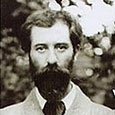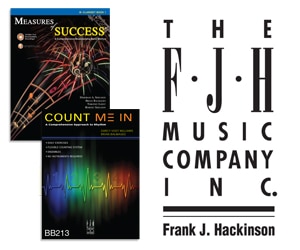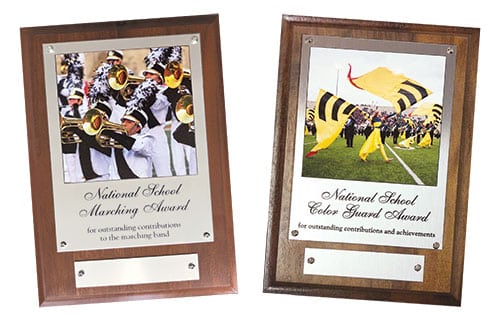Charles Koechlin, born in Paris in 1867, should be considered one of the great French composers of the first half of the 20th century. Although many of his compatriots surpassed him in name recognition few matched him in terms of compositional volume and variety. Koechlin lived at a time when there were many compositional styles in France. He was subjected to a variety of styles at the Paris Conservatory as a student of Gabriel Faure and experimented with all of them as he developed his compositional skills. He kept a respect for the traditional training he received at the Conservatory but developed a style of freedom and open-mindedness toward innovation.
Koechlin’s curiosity and enthusiasm went beyond music. He developed an interest in the sciences, particularly astronomy, and in literature, photography, travel, and cinema. His goal was to integrate these fields with music. As one of the first composers to see the possibilities of cinema as a medium for compositions, Koechlin wrote many pieces for film in the 1930s.
Koechlin visited the United States on several occasions and taught harmony and counterpoint at the University of California in Berkeley and at San Diego. After returning to France from his last trip to America in 1937, he taught for a brief time at the Schola Cantorum. His attitudes were considered far too liberal for the Conservatory. Widely considered an eccentric personality, Koechlin commonly dressed in Bohemian clothing or a shepherd’s cloak with a broadbrimmed hat. His white beard and black cape flowed about him, as he carried his possessions wrapped in brown paper.
Koechlin wrote over 200 works and arranged pieces for almost every possible combination of instruments. He composed piano solos, songs, choral music, chamber music, symphonic music, and film music. Koechlin even published many articles and treatises on harmony, orchestration, and counterpoint.
Koechlin composed songs and choral works before the tum of the century and began writing chamber music pieces as early as 1911, typically using the flute with various wind and string combinations. Composing for over 60 years, Koechlin had an appreciation of line and melody, which led him to later write a number of simple flute monodies. Some of his compositions, however, are demanding of the performer and are considered an intermediate level. There are several welcome expansions to intermediate-level flute student’s repertoire.
Quatorze Chants (Fourteen Pieces) for flute and piano, written in 1936 and published by Salabert, is modal and has elements of folk music. All of the pieces are firmly tonal with simple, functional, and tertian harmonies that modulate to closely related keys. However, the simple use of melodies and harmonies in these pieces are not typical of Koechlin’s writings. In Quatorze Chants four of the pieces have descriptive titles, although it does not appear that Koechlin is trying to depict a story through the melodies. Each one seems to be a separate entity with no direct relation to any of the others. Together they are about 12 or 13 minutes in length, but can be performed separately. No two pieces are in the same key and the mood and tempo varies, making it challenging for a performer to play each piece in succession.
In addition to Quatorze Chants for flute and piano, Koechlin’s flute duet, written from 1918-1920 (also published by Salabert) is not extremely demanding technically, but is written without a time signature in the first movement. However, barlines indicate melodic phrases and flow of line. This composition is in three movements with the first and third movements beginning with solo flute. The entire piece is linearly oriented as two independent lines intertwine. The tonalities are obscure in all three movements making it difficult to establish major and minor keys. In fact, this piece is composed almost in a 12-tone style; the phrase upon which the first movement is varied contains 11 different pitches without repetition. The piece helps students develop skills for reading dissonant, atonal music without key signatures. This duet is also pedagogical in nature as a study in intonation because of the use of octaves, fourths, and fifths between the two flutes.
There were several factors that inhibited the promotion of Koechlin’s music during his lifetime. First, Koechlin put his completed compositions in storage with little concern about their destiny. He was not consumed with making a name for himself and instinctively avoided notoriety. He was not a recluse, however he attended many concerts and devoted much of his time to promoting the works of young composers. His music has seldom been played because many of his flute works are not very technical and virtuosic. Performers can find the spirit of Koechlin’s music through imagination, insight, and an understanding of his intentions.
Koechlin’s last years were spent at his Mediterranean home at Canadel where he died on December 31, 1950. Although the upcoming 50th anniversary of his passing will not be widely noted, we should recognize his contributions to flute literature.
Flute Solo and Chamber Music
Deux Nocturnes, Op. 326, for flute, horn, and piano (or harp) (1904-1912).
Trois pièces, Op. 346, for flute, bassoon, and piano (1899-1907).
Sonata pour flute et piano, Op. 52 (1904-1915).
Suite en quartour, Op. 55, for flute, violin, viola, and piano (1911-1915).
Sonata pour deux flûtes, Op. 75 for flutes alone (1918-1920).
Pastorale, Op. 75b, for flute, clarinet and piano (1917-1921 ).
Divertissement, Op. 91, for three flutes (1923-1924).
Trio, Op. 92, for flute, clarinet and bassoon (1924).
L’Album de Lilian (volume 1), Op. 139, four of nine pieces include flute (1934).
L’Album de Lilian (volume 2), Op. 149, four of eight pieces include flute (1935).
Sonatine modale, Op. 155, for flute, and clarinet in A (1935-1936).
"Primavera" quintette, Op. 156, for flute, violin, viola, cello, and harp (1936).
Quatorze chants, Op. 157b for flute and piano (1936).
Epitaphe de Jean Harlow, Op. 164, for flute, saxophone, and piano (1937).
Septour, Op. 165, for flute, oboe, English horn, clarinet, alto saxophone, horn, and bassoon (1937).
Trois sonatines, Op. 184, for flute alone (1942)
Les Chants de Nectaire, Volumes 1, 2, and 3, Op. 198, 199, and 200, for flute alone (1944).
Pièce, Op. 218, for flute and piano (1948).
Sonata à sept, Op. 221, for flute, oboe, harpsichord (or harp), two violins, viola, and cello (1949).
Second quintette, Op. 223, for flute, violin, viola, cello, and harp (1949).
Stèle funéraire, Op. 224, for three flutes: piccolo, C flute, alto flute (1950).






